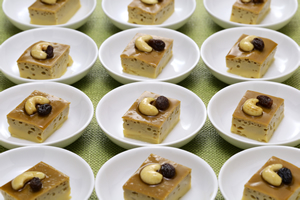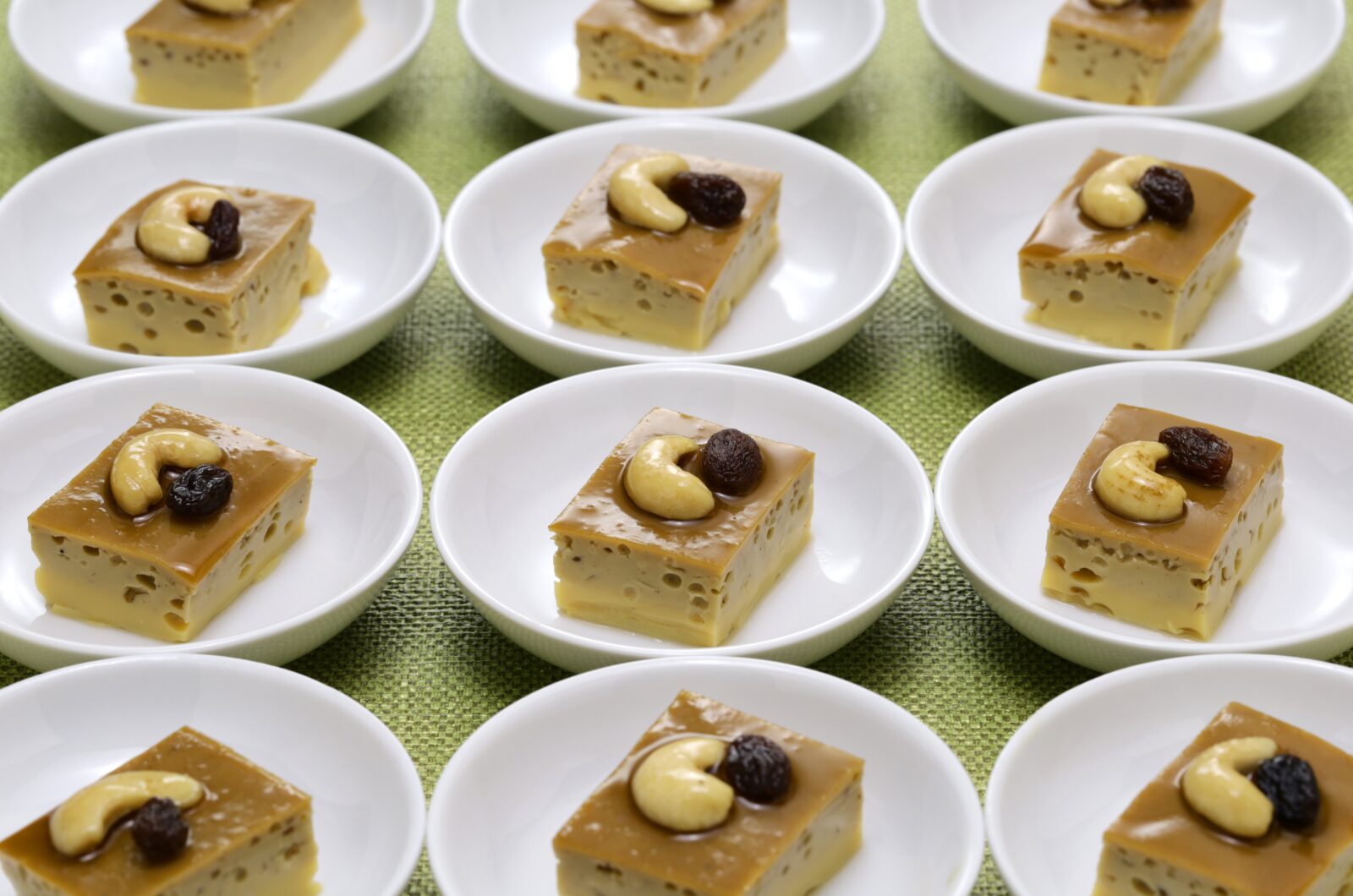Watalappam
Recipe by Admin
Course: DessertCuisine: Sri LankanDifficulty: Easy
Servings
5
servingsPrep time
20
minutesCooking time
45
minutesCalorieskcal
Cook Mode
Keeps the screen of your device on.
Ingredients
250 g palm sugar
4 tbsp sugar
1.5 cups water
3 cloves
3 cardamon pods
1 x 5 cm cinnamon stick
0.25 tsp nutmeg
7 eggs
1 cup coconut milk
75 g cashew nuts
3 drops vanilla essence
Directions
- Add sugar to medium size saucepan and
- Heat on medium to caramalise the sugar.
- Add water.
- Add cloves.
- Add cardamom pods.
- Add cinnamon stick.
- Add nutmeg.
- Add palm sugar.
- Heat on medium to dissolve.
- Once fully dissolved set aside and allow to cool to room temperature.
- Crack the eggs into a medium size stainless steel bowl.
- Add the nutmeg powder.
- Lighty whisk the eggs.
- Now strain the palm sugar mixture into the whisked egg mixture.
- Add the coconut milk.
- Add vanilla essence.
- Mix well.
- Cover the bowl with aluminium foil.
- Place water inside a steamer and bring to boil.
- Once the water is boiling, place the covered bowl inside the steamer.
- Cover with the steamer lid and steam on a medium heat for approximately 40~45 minutes.
- Remove the bowl and check the dessert is evenly steamed throughout.
- Allow to cool to room temperature.
- Place in refrigerator for 30 minutes.
- Cut into desired size squares.
- Garnish each square with a cashew.
- Enjoy!
Notes
- Watalappam (also called watalappan or vattalappam) (Sinhala: වටලප්පන්, Tamil: வட்டலாப்பம், Sri Lankan Malay: serikaya) is a Sri Lankan coconut custard pudding made of coconut milk or condensed milk, jaggery, cashew nuts, eggs, various spices, including cardamom, cloves, and nutmeg, and sometimes thick pandan juice or grated vanilla pods.
The dish is believed to have been brought to the country by Sri Lankan Malays in the 18th century, who moved from Indonesia to the country during Dutch rule. The name, watalappam, could be a corruption of the Tamil words vattil (cup) and appam (cake), hence vatillappam (cup cake). The dish however was originally unknown to the Tamil population. It is more likely that the dessert is derived from a Malay dish known as serikaya, which is a steamed custard made from eggs, coconut milk, palm sugar and pandan or screwpine leaves. The similarity between the two dishes suggests a common origin. It is likely that it is a word borrowed from the Dutch, Vla, which means a custard, and was applied by the Moors as a vernacular name, vattil-appan, using the Tamil phrasing.
The dessert has come to be strongly identified with Sri Lanka’s Muslim community and is a part of a traditional Eid al-Fitr celebrations, marking the end of Ramadan. It is also popular during weddings, religious festivals and other social functions and celebrations.
Source: Wikipedia
Have you tried this recipe?
Tag @recipe.info on Instagram and hashtag it with #recipe.info

